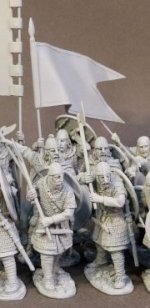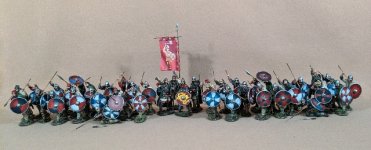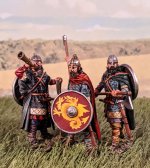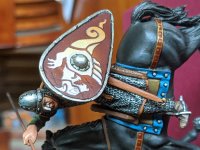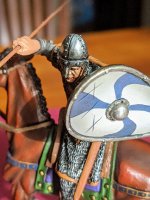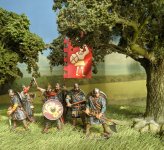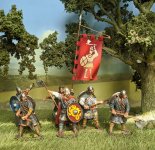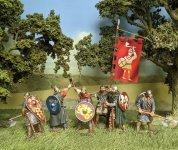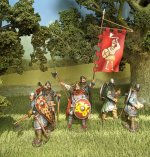NEW RELEASES FOR APRIL 2020
THE AGE OF ARTHUR
ANGLO SAXON/DANISH SHIELDWALL
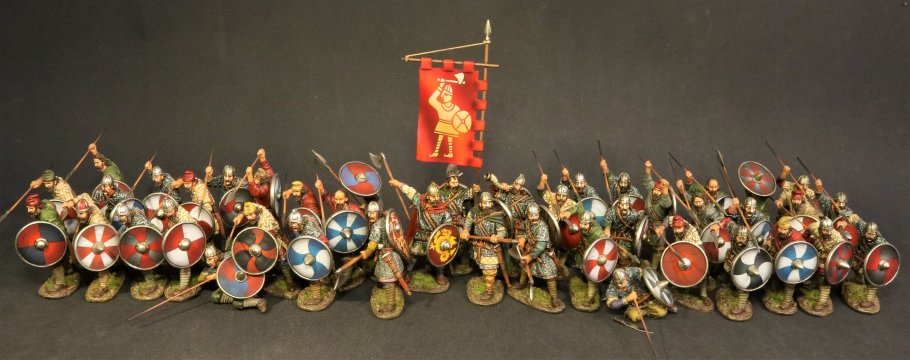
The death of King Edward the Confessor of England in January 1066 had triggered a succession struggle in which a variety of contenders from across north-western Europe fought for the English throne. These claimants included the King of Norway, Harald Hardrada.
The Battle of Stamford Bridge took place at the village of Stamford Bridge, East Riding of Yorkshire, in England on 25 September 1066, between an English army under King Harold Godwinson and an invading Norwegian force led by King Harald Hardrada and the English king's brother Tostig Godwinson. After a bloody battle, both Hardrada and Tostig along with most of the Norwegians were killed. The battle has traditionally been presented as symbolising the end of the Viking Age,
Harold's victory over the invading Viking army was short-lived. Three days after the battle at Stamford Bridge, on 28 September, a second invasion army led by William, Duke of Normandy, landed in Pevensey Bay, Sussex, on the south coast of England. Harold had to immediately turn his troops around and force-march them southwards to intercept the Norman army. Less than three weeks after Stamford Bridge, on 14 October 1066, the English army was decisively defeated and King Harold II fell in action at the Battle of Hastings, beginning the Norman conquest of England
A Housecarl was known as a bodyguard in medieval Northern Europe.
The term originated in Scandinavia and was brought to Anglo Saxon England by the Danish conquest in the 11[SUP]th[/SUP] century. Housecarls were well trained and were paid as full time soldiers. In England they had a number of roles, both military and administrative.
Harold Godwinson’s Housecarls had a crucial role as the backbone of his army at Hastings. Although they were numerically the smaller part of Harold’s army, their superior equipment and training meant they could have been used to strengthen the fyrd, or militia which made up most of harold’s troops.
They would have traditionally been placed in the centre around the leader’s standard, but also it is believed in the first ranks of both flanks, with the fyrdmen behind them.
At the Battle of Hastings, the Housecarls fought after Harold’s death, holding his oath to him until the very last man was killed.
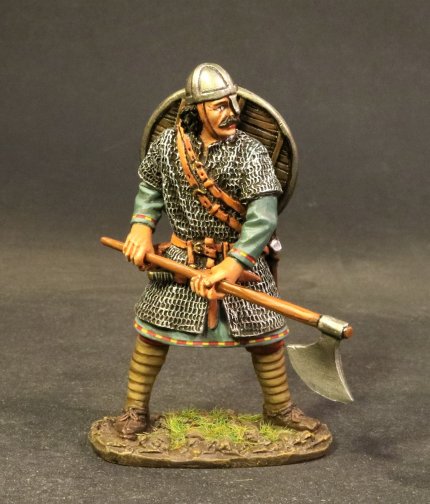
SX-06A
THE AGE OF ARTHUR,
ANGLO SAXON/ DANES.
SAXON HOUSECARL.
(1 pc)
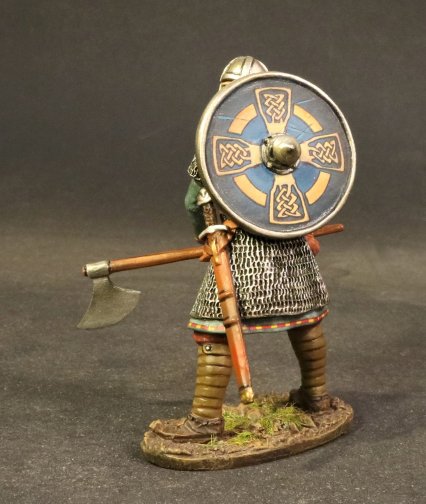
The Bayeux Tapestry depicts the Housecarls as footmen clad in mail, with conical helmets and fighting with the great two handed Dane Axe.
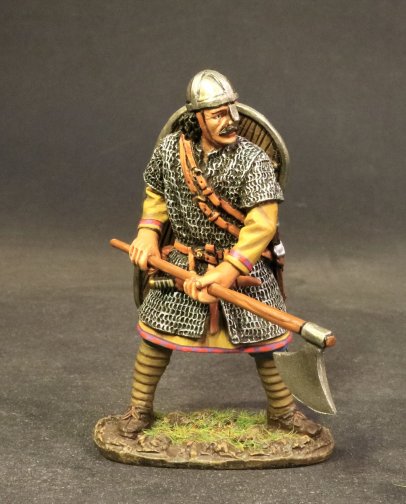
SX-06B
THE AGE OF ARTHUR,
ANGLO SAXON/ DANES.
SAXON HOUSECARL.
(1 pc)
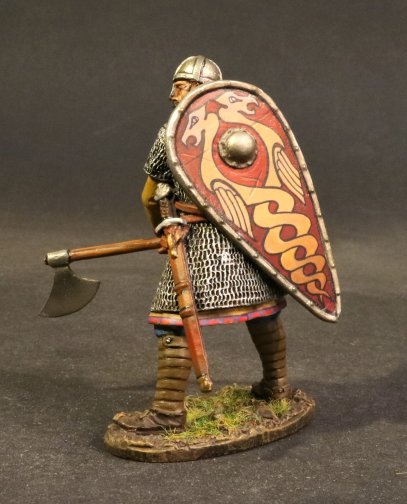
**PLEASE CONTACT YOUR LOCAL DEALER FOR FURTHER INFORMATION**
THE AGE OF ARTHUR
ANGLO SAXON/DANISH SHIELDWALL

The death of King Edward the Confessor of England in January 1066 had triggered a succession struggle in which a variety of contenders from across north-western Europe fought for the English throne. These claimants included the King of Norway, Harald Hardrada.
The Battle of Stamford Bridge took place at the village of Stamford Bridge, East Riding of Yorkshire, in England on 25 September 1066, between an English army under King Harold Godwinson and an invading Norwegian force led by King Harald Hardrada and the English king's brother Tostig Godwinson. After a bloody battle, both Hardrada and Tostig along with most of the Norwegians were killed. The battle has traditionally been presented as symbolising the end of the Viking Age,
Harold's victory over the invading Viking army was short-lived. Three days after the battle at Stamford Bridge, on 28 September, a second invasion army led by William, Duke of Normandy, landed in Pevensey Bay, Sussex, on the south coast of England. Harold had to immediately turn his troops around and force-march them southwards to intercept the Norman army. Less than three weeks after Stamford Bridge, on 14 October 1066, the English army was decisively defeated and King Harold II fell in action at the Battle of Hastings, beginning the Norman conquest of England
A Housecarl was known as a bodyguard in medieval Northern Europe.
The term originated in Scandinavia and was brought to Anglo Saxon England by the Danish conquest in the 11[SUP]th[/SUP] century. Housecarls were well trained and were paid as full time soldiers. In England they had a number of roles, both military and administrative.
Harold Godwinson’s Housecarls had a crucial role as the backbone of his army at Hastings. Although they were numerically the smaller part of Harold’s army, their superior equipment and training meant they could have been used to strengthen the fyrd, or militia which made up most of harold’s troops.
They would have traditionally been placed in the centre around the leader’s standard, but also it is believed in the first ranks of both flanks, with the fyrdmen behind them.
At the Battle of Hastings, the Housecarls fought after Harold’s death, holding his oath to him until the very last man was killed.

SX-06A
THE AGE OF ARTHUR,
ANGLO SAXON/ DANES.
SAXON HOUSECARL.
(1 pc)

The Bayeux Tapestry depicts the Housecarls as footmen clad in mail, with conical helmets and fighting with the great two handed Dane Axe.

SX-06B
THE AGE OF ARTHUR,
ANGLO SAXON/ DANES.
SAXON HOUSECARL.
(1 pc)

**PLEASE CONTACT YOUR LOCAL DEALER FOR FURTHER INFORMATION**


